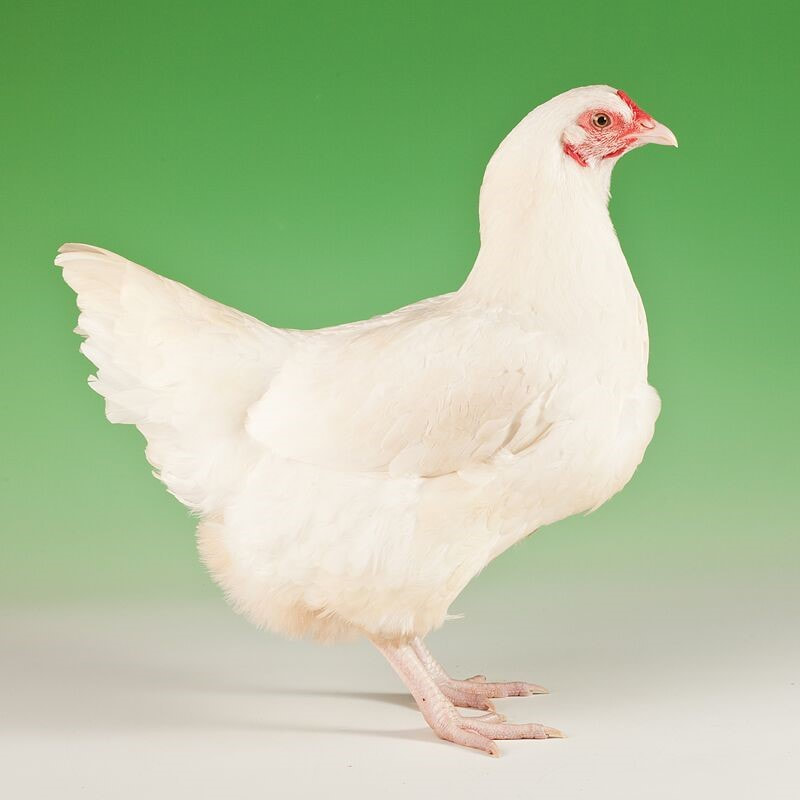The all-white Ixworth was created by Reginald Appleyard in 1932, taking its name from the village in Suffolk, and was produced as an excellent table bird with good laying qualities. Breeds used in its make-up included white Sussex, white Orpington, white Minorca, Jubilee, Indian and white Indian Game. In 1938 Ixworth bantams followed, and at the time their breeder said they were better than the large fowl. The breed is now kept by the dedicated few, in both large fowl and bantam.
General characteristics: male
Carriage: Alert, active and well balanced.
Type: Body deep, well rounded, fairly long but compact. Back long, flat, reasonably broad, without too prominent a slope to the tail. Breast broad, full, deep, well rounded, long and wide, low breastbone carried well forward; with unpronounced keel or keel point; well fleshed and rounded off for entire length. Wings strong, carried close, showing shoulder butts. Tail compact, of medium length and carried fairly low, the sickles close fitting.
Head: Broad and of medium length. Beak short and stout. Eyes full, prominent, keen expression, without heavy brows. Comb pea type. Face smooth and of fine texture. Earlobes and wattles medium size and fine texture.
Neck: Somewhat erect and of reasonable length. Hackle feathers short, close fitting and in no way excessive or loose.
Legs and feet: Legs well apart, and of reasonable length to ensure activity. Thighs well fleshed and of medium length. Shanks covered with tight scales, free from feathers. Toes, four, straight, well spread and firm stance. Bone characteristic of a first-class table bird.
Plumage: Short, silky and close fitting; fluff likewise.
Female
The general characteristics are similar to those of the male, allowing for the natural sexual differences.
BANTAM
Ixworth bantams should follow exactly the standard for large fowl.
General characteristics: male
Carriage: Alert, active and well balanced.
Type: Body deep, well rounded, fairly long but compact. Back long, flat, reasonably broad, without too prominent a slope to the tail. Breast broad, full, deep, well rounded, long and wide, low breastbone carried well forward; with unpronounced keel or keel point; well fleshed and rounded off for entire length. Wings strong, carried close, showing shoulder butts. Tail compact, of medium length and carried fairly low, the sickles close fitting.
Head: Broad and of medium length. Beak short and stout. Eyes full, prominent, keen expression, without heavy brows. Comb pea type. Face smooth and of fine texture. Earlobes and wattles medium size and fine texture.
Neck: Somewhat erect and of reasonable length. Hackle feathers short, close fitting and in no way excessive or loose.
Legs and feet: Legs well apart, and of reasonable length to ensure activity. Thighs well fleshed and of medium length. Shanks covered with tight scales, free from feathers. Toes, four, straight, well spread and firm stance. Bone characteristic of a first-class table bird.
Plumage: Short, silky and close fitting; fluff likewise.
Female
The general characteristics are similar to those of the male, allowing for the natural sexual differences.
BANTAM
Ixworth bantams should follow exactly the standard for large fowl.
Please contact the breed registrar for more information - [email protected]


